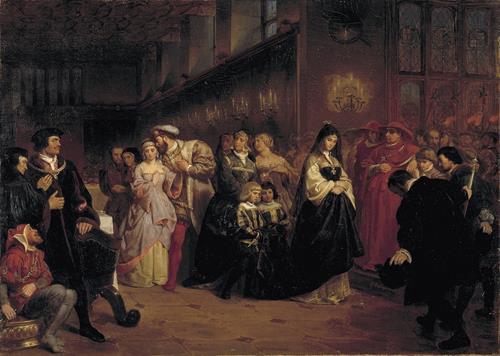This week’s #PortraitTuesday treat is a 19th century oil painting by Emanuel Gottlieb Leutze.
It’s called “The Courtship of Anne Boleyn”, or “The Cardinal’s Ball”, and dates back to 1846. It’s part of the collection of the Smithsonian American Art Museum.

Leutze was born in 1816 in Schwäbisch Gmünd, in the Kingdom of Württemberg, but moved to the United States in childhood. His most famous painting is “Washington Crossing the Delaware”, which he painted in 1851.
Here’s what the Smithsonian American Art Museum says of this painting:
“This painting shows King Henry VIII of England and his mistress, Anne Boleyn. Henry fell in love with Anne, Queen Catherine’s lady-in-waiting, and divorced his Spanish wife so that he could marry her. To the left of Henry and Anne, the ambassador from Spain expresses his disgust as he watches the king carry out his affair in public. Emanuel Gottlieb Leutze was a supporter of the American and German revolutions and may have painted King Henry’s infamous betrayal to show his distaste for royalty.”
Notes and Sources
- The Smithsonian American Art Museum – https://americanart.si.edu/artwork/courtship-anne-boleyn-14565